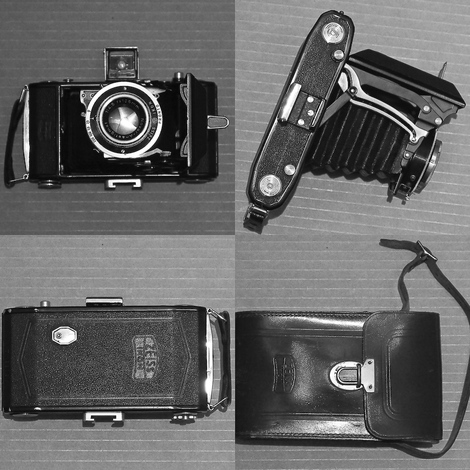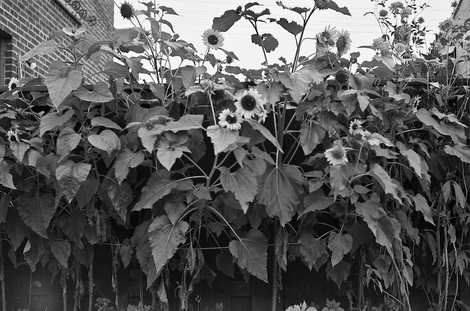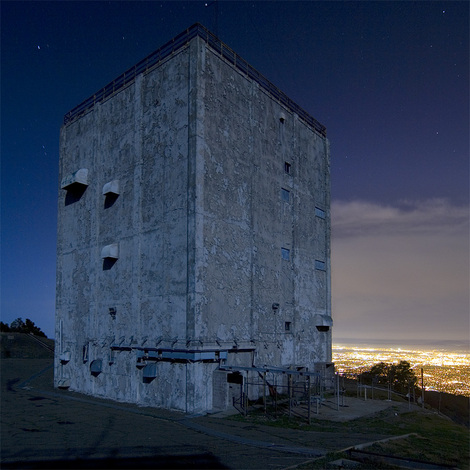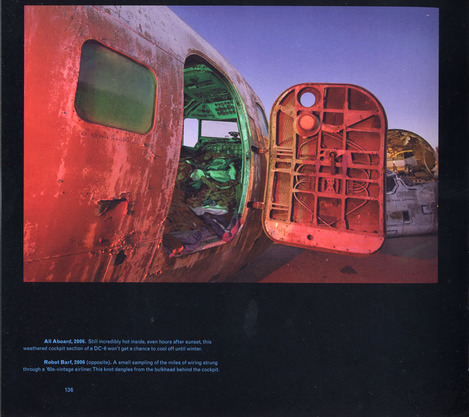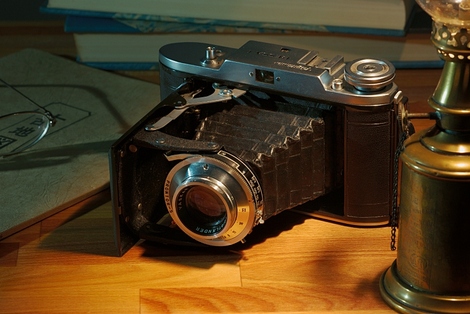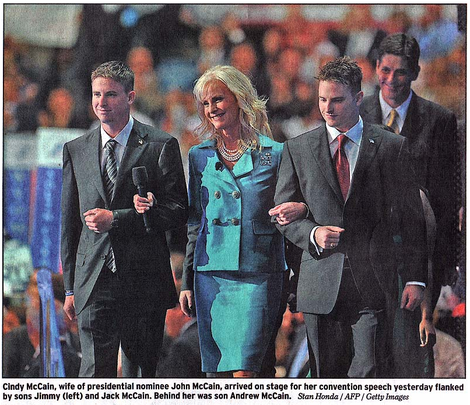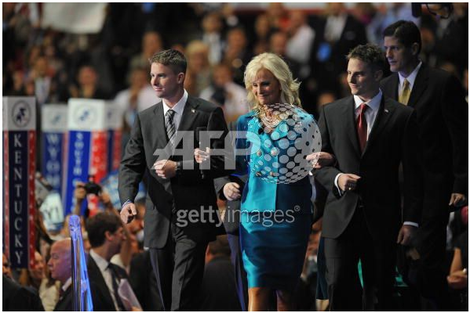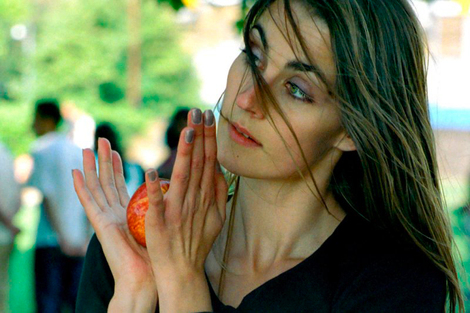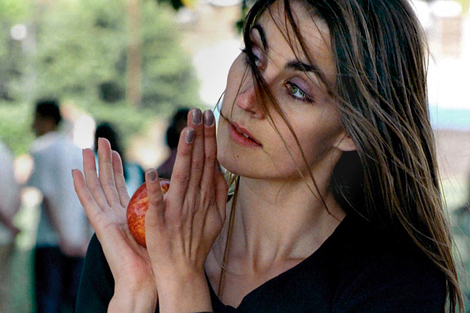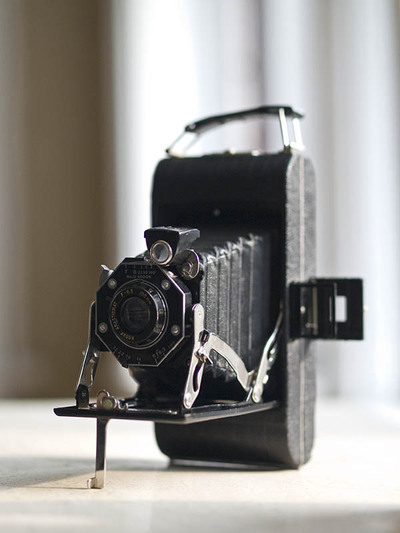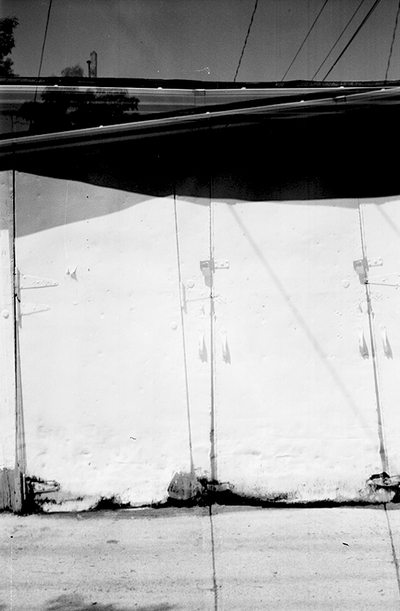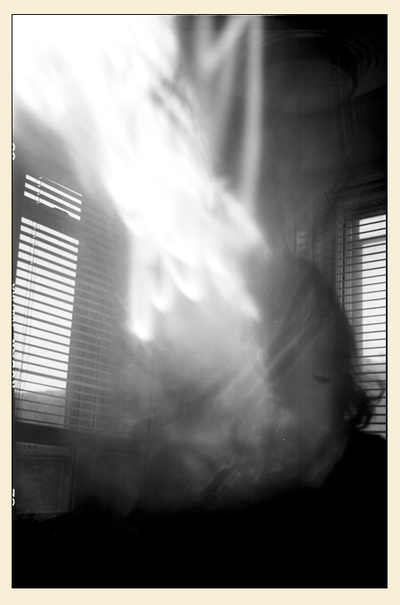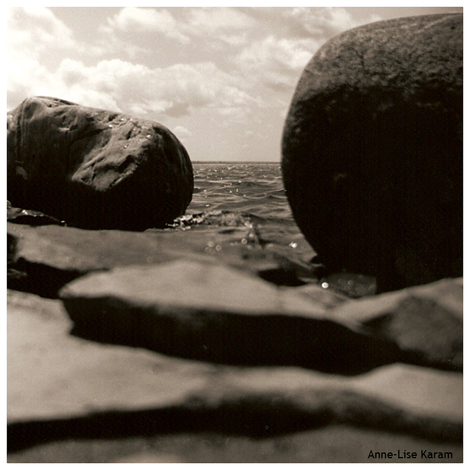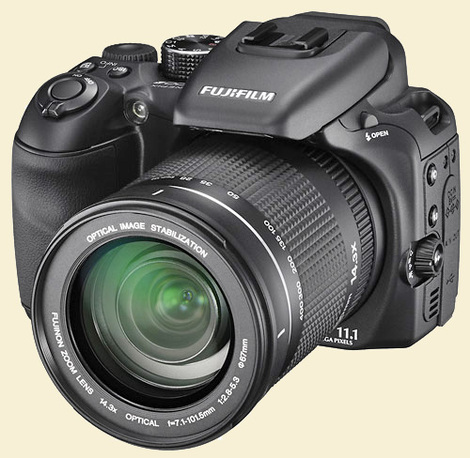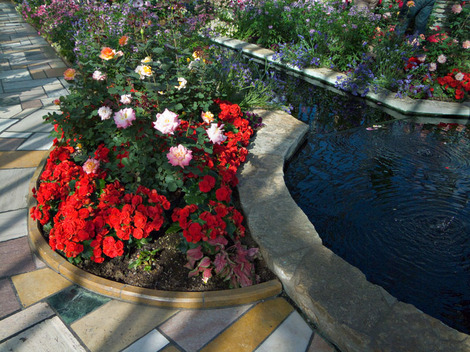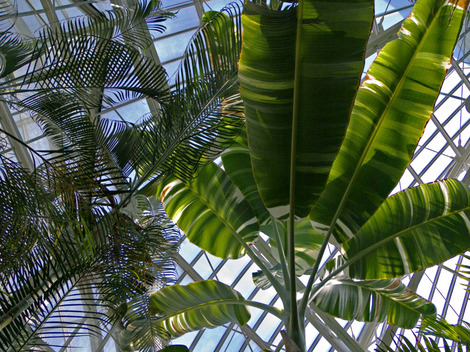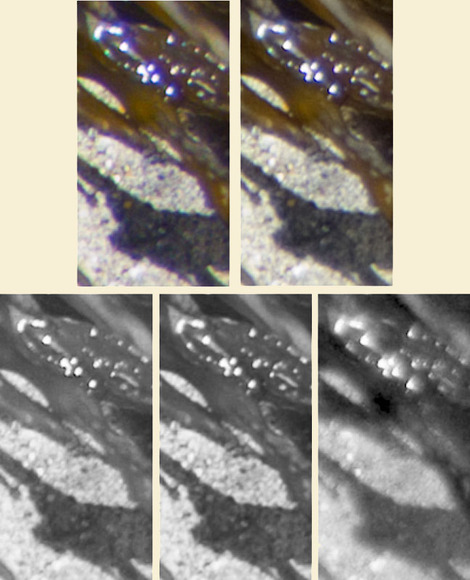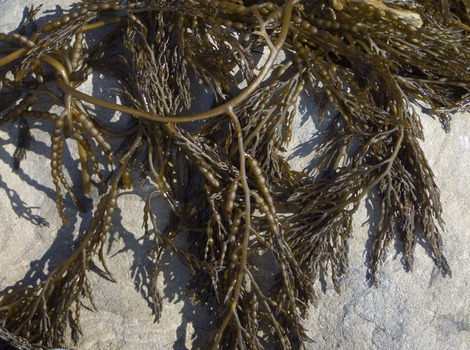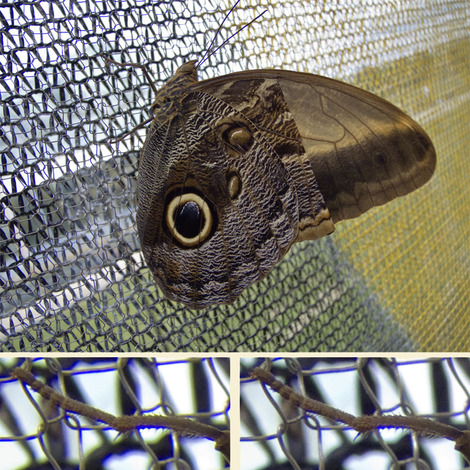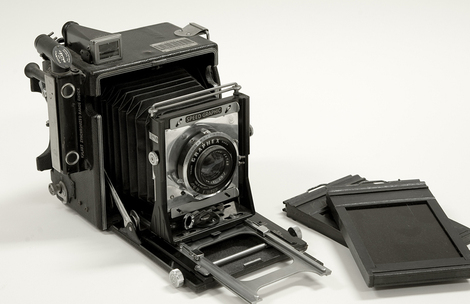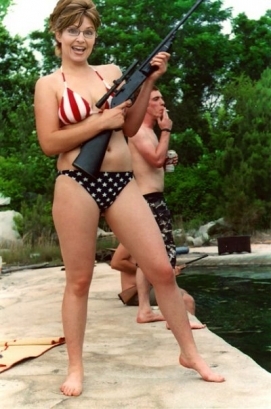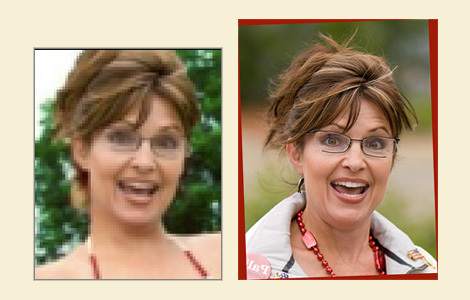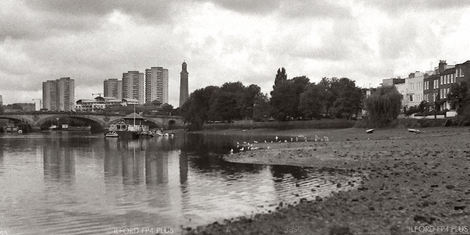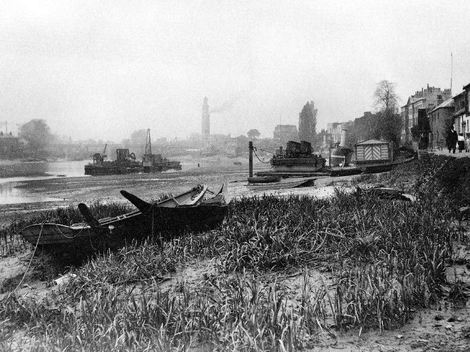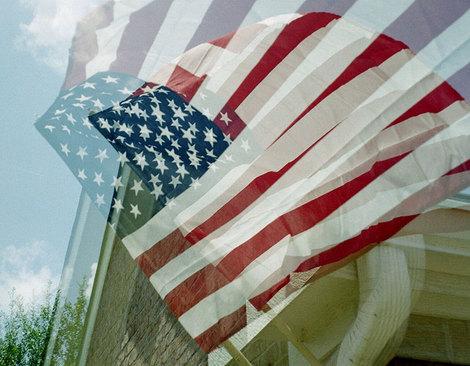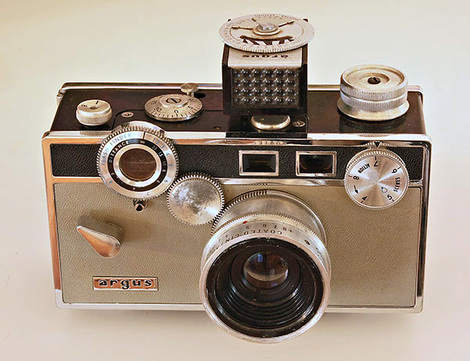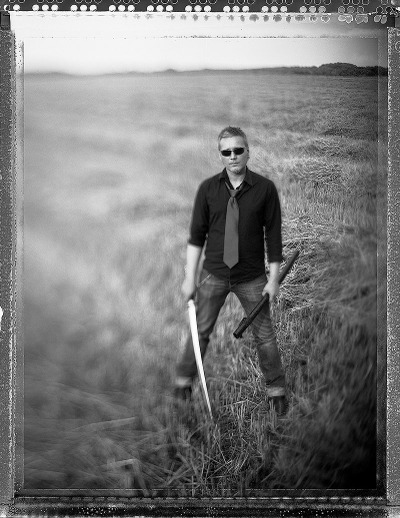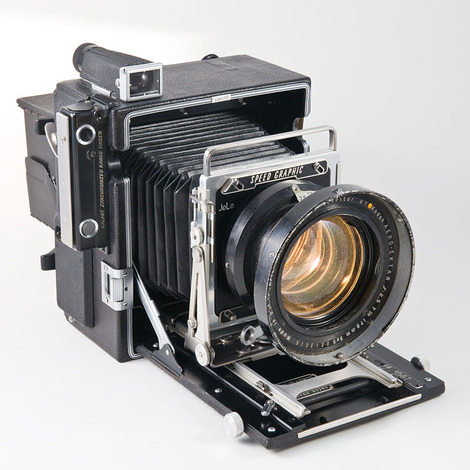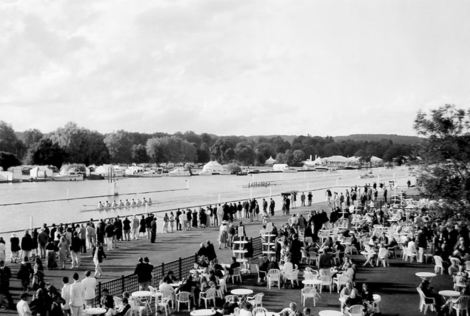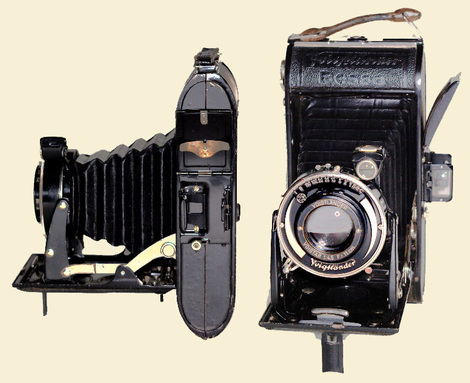Recent Posts
- What Features Would You Like to See on a New TOP?
- The Online Photographer Will Be Relaunching (Blog Note)
- The Thing I Miss Most About the Film Era
- Wayward Photographer Triggers Near-Riot At U.S. Open
- Open Mike: The Midnight Ride (OT)
- Editing By Magic
- The Killip Conundrum
- Kristine Hinrichs, Photographer of Milwaukee
- Jim and Becky's Vermont Oatmeal (OT) (A One-Paragraph Post)
- One Kind of Person EVs Are Good For (OT) (A One-Paragraph Post)
+ Sponsors
« August 2008 | Main | October 2008 »
September 2008
Tuesday, 09 September 2008
Forgotten Camera: R. Kolewe
Posted on Tuesday, 09 September 2008 at 02:42 PM | Permalink | Comments (3) | TrackBack (0)
Nikon D3 Shutter
The Nikon D3 shutter in super slow motion, by Marianne Oelund and Jeffrey Friedl. Let it load and then move your mouse from left to right.
_____________________
Mike (Thanks to Albano Garcia)
Posted on Tuesday, 09 September 2008 at 02:26 PM | Permalink | Comments (17) | TrackBack (0)
Monday, 08 September 2008
'Night Vision' by Troy Paiva
Reviewed by Geoff Wittig
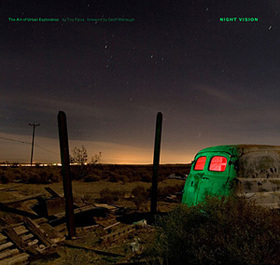 Night Vision by Troy Paiva
Night Vision by Troy Paiva
Chronicle Books, 2008
Paperback, 9.6 x 8.8"
$24.95 ($16.47 at Amazon)
-
Night photography is a tiny corner of the larger photography world, with its own quirks and foibles. Some of the better known fine art photographers such as George Tice, Chip Forelli, Michael Kenna and Helen Garber have featured night exposures in their work. If "conventional" photography has been feeling a bit stale for you, check it out. It provides a huge range of possibilities, from grainy high-ISO urban reportage to dream-like long exposures of moonlit shores. Metering and exposure is generally problematic, requiring lots of trial and error. Back in the prehistoric days of film this meant shooting a roll of film and getting it back from the lab days or even (for Kodachrome, in my case) weeks later, seeing what went wrong, and trying again. The long lead time made iterative learning a real chore, but the final results when everything goes right can be spectacular. Digital capture shortens the whole learning cycle dramatically; things are much easier now. There's a fascinating website devoted to night photography called The Nocturnes; it's well worth exploring if you have any interest.
Within the night photography world there is a smaller subculture devoted to exploration of abandoned buildings and relics, associated with the "UrbEx" phenomenon of urban exploration. Sort of like punk skateboarders, only with cameras. Troy Paiva's new book Night Vision mines this vein of imaging, and follows a path he began exploring with his previous book, Lost America: the Abandoned Roadside West (2003). His night photography technique seems to suit the subject better than "straight" imaging. The subjects are shot at night, generally minutes-long exposures under a full moon, with lots of colored-gel flash or light-painting, a la Chip Simons.
Night Visions has five subsections, each devoted to a different subject, ranging from an abandoned hotel to desert ghost towns to abandoned cold-war military bases to an aircraft boneyard. The brief foreword by Geoff Manaugh invokes authors from W.G. Sebald to J.G. Ballard in an attempt to link Paiva's work to a larger artistic tradition. Paiva's own introduction is a lot more down-to-earth, describing in some detail his technique and the unusual appeal of exploring industrial relics at night. The images themselves vary from moody moonlight desolation to crumbling buildings to derelict aircraft wreckage garishly lit in green and red. The overall impression is that of tacky post-apocalyptic grandeur, sort of Ozymandias of the strip-mall.
Physically the book is compact with a nice quality flexible cover. Color quality would be difficult to judge given the odd nature of the images themselves, but they certainly look striking enough. They are set in black pages which emphasize their nocturnal character. My only complaint is that the text, set in an inoffensive sans-serif font, is printed in Prussian blue against the black page at a fairly small point size. This makes it a real challenge for my middle-aged eyes.
Paiva's work follows a consistent æsthetic theme in exploring his unusual subject. If you like the look, you'll love the book.
For further reading
For those who find night photography interesting, there are a number of resources to tap, beginning with the Nocturnes website above. Andrew Sanderson's Night Photography (Amphoto, 2002) is a B&W-film-based book with lots of information on 'straight' night photography including exposure and development starting points. A good contemporary source is Jill Waterman's Night and Low-Light Photography
(Amphoto 2008), which includes examples of many photographers' work (including Troy Paiva's) and plenty of information on both film and digital technique.
_______________________
Geoff
Featured Comment by Jill Waterman: "Thanks, Geoff, for the mention of my new book, Night and Low Light Photography, at the end of Troy's book review. For anyone interested to get a sneak peek at what my book has to offer I recently launched a companion website. In addition to profiles of the 30 contributors and other content areas, the site features a regularly updated guest artist portfolio, the first of which presents a selection of images from Troy's new title. Please pay the site a visit and check back for updates!"
Featured Comment by Jason: "I'll recommend a fantastic book: Nocturnes by Chris Faust."
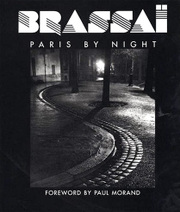 Mike adds: As people are suggesting other night photography books in the comments, I can't resist a mention of the granddaddy of this genre, Paris By Night
Mike adds: As people are suggesting other night photography books in the comments, I can't resist a mention of the granddaddy of this genre, Paris By Night by the great Transylvanian, Brassaï. I have the Pantheon edition, which has gorgeous large spot-varnished repros on matte paper, and I've never seen the current Bulfinch reprint, so I can't speak to the repro quality in that. But the book is one I frequently return to for pleasure, a stone classic. The original was published by Arts et Metiers Graphiques in Paris in December of 1932. The spiral-bound first edition, with the so-called "pebble" (cobblestone) cover (below left), which comes up for auction rarely, usually sells in the range of $30,000–$50,000.
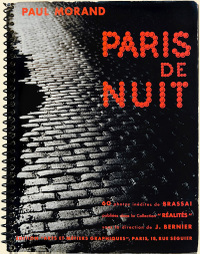 While photographing Paris de nuit, Brassaï was rounded up several times in late-night police raids, because the gendarmes refused to believe that it was possible to photograph in the middle of the night!
While photographing Paris de nuit, Brassaï was rounded up several times in late-night police raids, because the gendarmes refused to believe that it was possible to photograph in the middle of the night!
Posted on Monday, 08 September 2008 at 09:20 AM in Books | Permalink | Comments (5) | TrackBack (0)
Forgotten Camera: Jan Morén
I got this Voigtländer Bessa I (along with a Swedish-made box camera) when my parents were cleaning house and was going to throw them out. It's a 6x9 format folding camera. Unlike later models, the Bessa I has no rangefinder so you'll need to either use an external rangefinder, use hyperfocal distance, or just guesstimate the distance. It works well without a distance meter in practice. The camera itself is remarkably compact for a medium-format body—much slimmer in your bag than a DSLR—and solidly built. I wrote a review of sorts on this camera here.
The image is of a small pond outside an apartment complex in Borlänge, Sweden. Nothing special about it, except that I liked the mixed light. The scanner software sharpened the image (this was before I noticed that was on by default) and I brightened the image a bit afterwards. Other than that it's the original image, with film scratches and everything.
Jan Morén
Japan
Posted on Monday, 08 September 2008 at 06:45 AM | Permalink | Comments (4) | TrackBack (0)
Sunday, 07 September 2008
OT: What the—?

Andy Murray, first-time U.S. Open finalist. Photo: Al Bello/Getty Images
Just an idle OT question for our Great British friends—who the heck is Andy Murray?!? And where did he come from? I just watched him take apart Rafa Nadal, who since Wimbledon had been looking a lot like tennis's new 800-lb. gorilla. I thought Murray was getting lucky yesterday and the rain delay would let Nadal return to form and crush him today. And it looked for a while like that would happen. But no. I never even heard of Murray before.
___________________
Mike
Posted on Sunday, 07 September 2008 at 06:39 PM | Permalink | Comments (18) | TrackBack (0)
Photoshop Disaster? Nope, a Mimicking Error
Notice anything funny about Mrs. McCain's right hand(s)? What's that, a Photoshop job gone very wrong?
Not so fast. It's a category of apparent error called a mimicking error, for cases in which actual content looks like an error but isn't. Mimicking errors might include a musician including in synthesized music a noise that sounds like it might be a telephone ringing in the background, but isn't; or a texture in a photograph that looks like film grain but isn't.
In this case, a picture published by the New York Times is being shown around the web as a "Photoshop error" when in fact it's nothing of the kind. It's true that Cindy McCain doesn't have three arms. But the appearance that she does is merely an illusion. Her right arm is linked in Jimmy McCain's, and is holding a microphone. The arm that appears to be hanging by her right side (our left) belongs to an individual standing directly behind her; you can see his pants leg to the right of her hip and thigh. The illusion is exacerbated by the "flattening effect" of a long telephoto lens. The effect might mimic a so-called "Photoshop disaster," but it isn't one.
___________________
Mike (Thanks to Christopher Gibbs)
Featured Comment by jcyrai: "Getty Images has another shot by Stan Honda that deconstructs the illusion (image 82665115 on gettyimages.com):"
Posted on Sunday, 07 September 2008 at 05:11 PM | Permalink | Comments (9) | TrackBack (0)
What the Light's Really Like
About the question below: the picture is a portrait of a public performer taken by Henry Rogers. After I posted the fascinating "Forgotten Camera" by Henry Rogers (and his grandfather!) the other day, I went to Henry's website to look around. Lots of nice stuff. Something grabbed me about that portrait of his, but something also seemed not quite right about it, so I performed a few quick corrections on it just for fun. (I've mentioned before that I sometimes do this, I think just as a recreation—I just like to "see" with photographs rather than imagine.) The version on top is the one from Henry's website, the one on the bottom is the result of my fooling around with it.
Meanwhile I'd been having a friendly conversation with Henry, so I ventured to show him my version (I don't usually do that—"mind your own business" being a good rule of thumb when mucking about with other peoples' pictures). I thought Henry's response was very interesting, and I repeat it below in full, with his permission of course:
I like your version very much. The skin tones are lovely and I almost wish I had altered the colour balance like that myself, but:
In scenes such as this, with lots of sunlight through green vegetation and with extra light coming off a river (this picture was on the South Bank of the Thames in Central London between Westminster and Waterloo Bridges), by the time the light falls on anything it has acquired a slight yellow-green cast. I sometimes do remove casts like this and sometimes I don't.
In this case the advantages of removing it is that the skin tones then look very natural. The disadvantage is that the vegetation becomes a bit grey and the apple seems less vivid. I keep on looking at the two versions and I think I see two different personalities in the performer. In your version there is a remoteness which is intriguing. In mine I persuade myself that I see more sensuality but you may well think I'm fooling myself.
I've thought about this quite a lot. A couple of years ago there was an exhibition at the Tate Gallery of Constable's huge pictures, many of them sunlit riverside scenes in Suffolk. I looked very carefully to see what he had done with his colours in comparable lighting. I couldn't help noticing that in some cases he had chosen to use a yellowish cast himself. As all the paintings appeared to have been cleaned within fairly recent times it wasn't just a case of discoloured varnish. Which is why I came to the conclusion that there really is a cast in such scenes, not just an effect created by emulsions and scanners or by sensors.
The big question is what, as observers, do we expect to see when looking at a finished picture? We don't necessarily expect to see a literal record and even if we did we might not always 'believe' it. So changing what is actually there into what 'seems' more natural may help belief.
So I'm still not sure which version I prefer and thank you very much for taking the trouble to talk about this.
The camera itself would have been venerable enough for a place in 'Forgotten Cameras'. It's a 1953 Kiev 3 bought, very inexpensively, from the Ukraine via Ebay. It cost very little and only needed a good clean by someone I know who is a Contax enthusiast. The exposure meter, which still works though I don't rely on it, is calibrated in DIN not GOST so I rather fancy it might have been in a crate of bits shipped from Germany when the USSR production line was set up. It is a great tribute to the quality of the original design by Zeiss engineers and also, I think, to the newly trained mechanics in Kiev, that such a complex piece of mechanism should still be working well over 50 years later.
I see that most respondents to the poll question prefer my (Mike's) version—the one on the bottom—but I'm still not sure I do myself! Usually—just speaking personally now—when I see an obvious color-cast and/or too much saturation, locking in the color to something closer to what I consider "right" will have the effect of transforming the picture, making it look much more coherent and natural. But it didn't, quite, in this case. And perhaps Henry's comments shed some light on the reason why.
Keychain jealousy
And finally, at the same time as all this discussion was taking place, my friend Michael Tapes sent me his new advertisement for the keychain version of the WhiBal neutral reference tool (upper left on this page). Professional photographers, especially studio advertising guys, use "gray cards" much more than amateurs do, just in general. What's a shame is that amateurs don't use them more often as learning tools. In this case, it would have been very interesting if Henry had made an exposure under that "sunlight through green vegetation and light coming off the river" with a gray reference, because then we'd know how the light really looked. Note that it doesn't need to be a version of that exact picture—you can determine the color correction for any given lighting situation from one shot and apply it to other shots taken under the same lighting. In this case I think it would have been very instructive to both of us to have an objective record of what the light for this portrait really did look like—it would have told us whether the light really was as greenish as Henry remembers, and whether my interpretation is correct or merely over-corrected.
While I'm just not the type to carry a large gray card or white balance around with me, I'm also very jealous of my keychain—I don't like to carry a great lump of trinkets in my pocket as a regular thing. Aside from a bare minimum of my most-used keys, I carry on my keychain a tiny but amazingly powerful LED flashlight (very useful) and a very small but high-quality Swiss Army pocketknife
(its predecessor having been confiscated by the airlines). That's all. But I'm going to add a keychain WhiBal, I think. It's on the way. I don't use either the flashlight or the pocket knife very often, but when I do need them, they come in very handy. I imagine the keychain WhiBal will be the same.
I closed the comments to the poll post below because I didn't want some readers suggesting to other readers how they ought to vote. But the comments are open to this post if you'd like to add your 2¢.
Henry's an awfully good sport to let me bollix up his picture and post it for the world to see, so thanks again to him.
_____________________
Mike
Posted on Sunday, 07 September 2008 at 01:34 PM | Permalink | Comments (40) | TrackBack (0)
Saturday, 06 September 2008
Which Do You Prefer?
(If for some reason you can't see the voting box, view it here.)
________________________
Mike (Thanks to Henry)
Posted on Saturday, 06 September 2008 at 02:21 PM | Permalink | TrackBack (0)
Forgotten Camera: Charlie Didrickson
I purchased this Kodak Junior Six-20 for this project. Found it in a junk shop in Sawyer, Michigan, and paid $25.00. It was formerly owned by Private John R. Sauppessig (label inside).
I ran two rolls of T-max 100 (120 re-spooled by B&H) through it with limited success. As you can imagine it does in fact have a light leak. The resulting pictures were of course a bit of a surprise. A few unintentional double exposures along with some massive burned out areas and other abnormalities. The image I chose to send is a double-exposed abstract.
The woman at GAMMA who processed and scanned them believes this camera to be the vessel for the spirit of the previous owner! :-) So we now call it the Dead Man's Camera.
On a last note it came with a roll of color film in it and have only started to search for who might process it. Seems a bit costly for my current financial situation.
Great fun doing this and I look forward to what others have come up with.
Charlie Didrickson
Chicago
Bonus portrait of my fiancée, Karen, titled "Burning Bride," just for fun....
Posted on Saturday, 06 September 2008 at 01:38 PM | Permalink | Comments (9) | TrackBack (0)
Friday, 05 September 2008
Forgotten Camera: Anne-Lise Karam-Choueiri
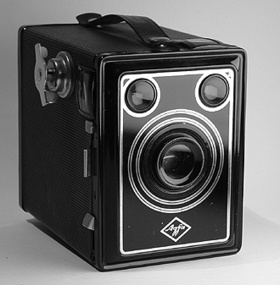 Hello,
Hello,
First time I enter this contest that I think is really cool.
I think it's great to try to uncover old cameras from dust. I just got a Nikonos II, didn't have time to test it; maybe next year I'll use it for the contest.
The camera I used is an Agfa Isobox 45 that was built in Germany in 1940. It's a very simple camera, no aperture to chose, no speed to control. Basically you can't control anything. It takes 120 film rolls. I had to test it because as I can't control aperture and don't know what its set aperture is, my first films didn't really work. I now use FP4 125 films, that I pull by 25 to 30%. It's great in practice.
Hope you like it and like the photo I took with it.
P.S. The source of the image of the box (the camera) is www.collection-appareils.fr. Thanks a lot.
Anne-Lise Karam-Choueiri
Ottowa, Canada
Posted on Friday, 05 September 2008 at 05:43 PM | Permalink | Comments (12) | TrackBack (0)
Thursday, 04 September 2008
What Kind of Digital Camera Do You Have?
(Note that the percentages will add up to more than 100% because of single individuals casting two votes.)
____________________________
Mike
P.S. If you can't see the poll above, here's a link.
Posted on Thursday, 04 September 2008 at 05:39 PM | Permalink | Comments (52) | TrackBack (0)
Fujifilm Finepix S100FS Review—Part 3
By Ctein
The Bad
Finally comes the bad news about the Fujifilm Finepix S100FS, a mix of major and minor complaints. You decide what matters to you:
Size: My normal carry-around film camera is medium format, so I can accept this behemoth. Still, I sure wouldn't have minded if the S100FS were more petite. Folks who are used to compact and lightweight cameras may find this one too burdensome to carry around casually.
Fuji FinePix Studio: The bundled RAW conversion software is an embarrassment to Fuji. It's painfully sluggish, running 10 times slower than ACR, including the screen updates when you adjust settings. It clips substantial amounts of highlight detail that ACR retains. It lacks most of the adjustments that ACR has, including some that are critical to getting really good image quality out of this camera (see "The Ugly" section). It only offers sRGB color space, not Adobe RGB with its greater color gamut.
The only thing it is good for is importing photos directly from your camera to your computer.
RAW/JPEG swap: Switching between RAW and JPEG mode involves running through a couple of layers of menu and 15 button clicks. Given that this camera presents some good reasons for using JPEG, even for a committed RAW photographer like me, this is annoying. Mode switching needs to be easier.
No cable release socket: The camera has Bulb setting, but to take advantage of it requires a special RR-80 Remote Release for an additional $40.
The Battery: The S100FS uses a proprietary lithium battery, with an anemic 7.2V, 1150 mAh capacity. Three to four hours of serious photography depletes it, regardless of the number of photographs made. In one such session I was doing a lot of chimping and reviewing the results on the LCD screen and I barely made 45 exposures before the battery died. Just making photos, no chimping or in-camera deletions, I could eke out 135–160 photographs in the same 3–4 hours and then the battery was dead.
The Fuji battery isn't much smaller than three high-capacity rechargeable AAs, yet it stores less energy. It takes a sluggish two hours to recharge; I can recharge AAs in 30 minutes. In a pinch I can get AAs anywhere if AA rechargeables are drained. If you plan to use this camera for all-day outings, better own two spare batteries!
The Ugly
Now we come to the really big problem. The good news about an all-in-one camera is that you never have to buy another lens for it. The bad news is that you can't. The S100's lens is simply not up to the quality of the rest of the camera.
Others have incorrectly reported that the lens has serious lateral chromatic aberration. In fact, the problem is badly undercorrected coma in the blue (illustration 3). That produces color fringing that looks like LCA, but it's much more difficult to correct in postprocessing. It cannot be fully compensated for, only ameliorated. Along with fringing, coma's severe smearing wipes out fine detail entirely. High-contrast fine detail goes yellow in the highlights and blue in the shadows. This is unfixable.
1. Great color typifies RAW photos from the Finepix S100FS...
2. ...As does an exceptional luminance capture range and fine tonality. But...
3. ...The camera lens creates some serious (partly-correctable) problems. Upper left shows the problem, with the lower B&W illustrations showing the corresponding red, green, and blue channels. There's almost no LCA, but the blue channel has terrible coma. Upper right is after ACR corrections, which can almost eliminate the fringing but can't restore the yellow-blue balance to the small sand grains. (This is a 160% enlargement from illustration #4.)
4. After correction in ACR, this image looks fringe-free even in a 14x20" print.
For the first several weeks of my review period, I waffled between giving this camera a "do not buy" recommendation and "buy but only with the most severe reservations." The image quality was simply fabulous...except for the ways it was completely unacceptable. Finally, after considerable experimentation, I figured out how to use Adobe Camera Raw to correct the problem to a sufficient degree, most of the time:
Turn down sharpening, which exacerbates artifacts and really isn't necessary at this stage. In the lens corrections panel adjust the red-cyan slider until red/cyan fringing is gone. Then adjust the yellow-blue slider to minimize yellow/blue fringing. Turn on highlight defringing.
Usually this produces a photograph that will even stand up to pixel-peeping, with excellent fine detail over the entire field (Illustrations 3, upper right, and 4). In certain cases it will not (illustration 5). It will also do nothing to restore fine detail that is suffering from yellow-blue color crossover. But the proof is in the printing, and 98% of the time the results are satisfactory even by my demanding standards.
5. Sometimes, even ACR can't counter the blue coma problem. This photograph looks okay as a 7x10" print, but the residual blue fringes are evident in larger prints. Lower left shows the butterfly's leg before my ACR correction method at 100% scale; lower right is after correction. It's better, but it's not good.
Believe me, I do understand what it takes to bring in a camera and lens with these features at this price point. But it's a mistake to try to do too much on a limited budget. The Fuji optical engineers made a poor compromise, degrading the S100's superb inherent image quality with this lens. I (and I think most buyers) would have been entirely happy with a lens that went out to "merely" 300mm equivalent and was much better corrected.
By the way, the lens has a most peculiar boke, which John Kennerdell has dubbed janome boke—literally "snake-eyed" but really the exact equivalent of bull's-eye (illustration 6). Compared to the coma problem this seems almost trivial, but even a boke-blind bloke like me noticed it.
6. An odd boke, named janome by John Kennerdell, is exhibited by the S100FS's lens in this 50% scale illustration.
Conclusion
My recommendation is "buy, with some reservations." Not if you want a casual camera that will produce top image quality with no unusual effort on your part. I'm willing to go to the extra effort and then the results are impressive. So I finally decided I could embrace this camera, warts and all. In fact, I bought the review unit from Fuji and sold my S6000fd.
It's a shame the ways in which this isn't a great camera came from poor design choices rather than being unavoidable at the price point. Still, the photographs I'm making with it are giving me the kind of joy that I need from an all-in-one camera. Even if it makes me work a bit for that.
_______________________
Posted on Thursday, 04 September 2008 at 10:44 AM | Permalink | Comments (15) | TrackBack (0)
Forgotten Camera: Mark Gregg
I purchased this Speed Graphic camera while attending college. For $20 I got the camera and a box of film holders. I was a 35mm 'shooter' at the time and my brief flirtation with this press camera convinced me that small format would continue to be my cup of tea. However as one who has difficulty parting with any photo equipment I've kept this old war horse in a box until Mike's contest. Unfortunately during the past 40+ years the film size (31/4 x 41/4) has been discontinued. The only way to use this camera is to cut 4x5 down to size.
The photo is a quick snap shot of my living room...we have been renovating our old Victorian house and I guess you would have to call this a 'high key shot' of the living room. After taking this photo I think I'll do more shooting with this camera. The rangefinder makes focusing rather easy and the sports finder on top is accurate enough for framing.
Mark Gregg
Dexter, Michigan
Posted on Thursday, 04 September 2008 at 08:14 AM | Permalink | Comments (6) | TrackBack (0)
Wednesday, 03 September 2008
Palin Spoof
If someone forwards you a rather alarming-looking photograph allegedly of the Governor of Alaska in peculiarly patriotic attire looking a bit too enthused about a firearm she's wielding poolside, well—as with all internet flotsam—best not to believe too quickly. At first glance it might be difficult to see how this:
Could be Photoshopped from this:
But flip the latter, crop and resize it to match, and compare the two side-by-side:
It's a skillful Photoshop job, no question—the lighting and resolution
match nicely, and the anonymous skullduggerer has thoughtfully slimmed her chin—but the bikini pic is fraudulent, beyond a doubt.
________________________
Mike (Thanks to Bob Burnett)
Posted on Wednesday, 03 September 2008 at 03:08 PM | Permalink | Comments (23) | TrackBack (0)
New Plan #3
Hmm, well, I seem to have not thought this through quite thoroughly enough. With regard to the "Forgotten Camera" challenge, I'd first like to thank everybody who submitted entries—we got quite a few. At first I was going to put them all on their own page, but it quickly became apparent that the formatting and organizing was going to be a headache. Then I figured I'd publish them all here on the main page in a flurry centering around yesterday (the deadline). But so many entries came in on Monday and Tuesday that now there are just too many to do that with. Plus, readers have a strong (if perfectly natural) tendency to comment most about the top item on the blog, which would seem to shortchange entrants whose pictures are buried too deep on the page. So I guess that doesn't seem like the perfect solution either.
Those were plans #1 and #2. Here's plan #3—how about if I just publish one a day until I run out, in the order in which they were received, along with the regular content of the blog? That would take the month of September and a little of October (I think there are about fifty overall, and I've already published ten or twelve). Newcomers to TOP might think that Forgotten Camera pictures is what we're all about, but I guess I can't worry too much about that. Sound good?
Anyway, below is today's—a particularly interesting one, the second from Henry Rogers of London.
____________________
Mike
Posted on Wednesday, 03 September 2008 at 08:46 AM | Permalink | Comments (17) | TrackBack (0)
Forgotten Camera: Henry Rogers #2
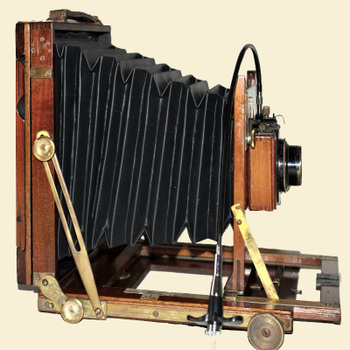 I hope you don't mind a second entry. I was given this half-plate camera in 1952, while I was still at school, by my grandfather who bought it in the 1890s. I used it for a bit as I was able to find a source of long out-dated "ordinary" emulsion plates which I could afford out of my pocket money. It was my second camera as the first had been the statutory Kodak Box-Brownie (long gone to glory). Eventually I was given the roll-film camera which features in my earlier entry.
I hope you don't mind a second entry. I was given this half-plate camera in 1952, while I was still at school, by my grandfather who bought it in the 1890s. I used it for a bit as I was able to find a source of long out-dated "ordinary" emulsion plates which I could afford out of my pocket money. It was my second camera as the first had been the statutory Kodak Box-Brownie (long gone to glory). Eventually I was given the roll-film camera which features in my earlier entry.
I dug the camera out of a drawer a few months ago and tried a few exposures using Multigrade printing paper. Encouraged by the results I obtained a new set of bellows from Camera Bellows in Birmingham (our English Birmingham, not yours) and did some refurbishing. While I was at it I made some card inserts which would hold lengths of film cut from a 120 roll. as an alternative to paper. These strips are easy to load into a daylight tank in a changing bag for ease of processing. My image below was taken on FP4+. I couldn't resist a sepia tint! The exposure was made using the original Thornton Pickard roller blind shutter. I think from my results the shutter speeds are now about one stop slow which isn't bad for a 100-year-old gadget; however as I don't think anyone makes the traditional rubber bulb remote releases I fixed a small brass nut onto the release bar with epoxy resin glue which enables me to use a modern cable release.
We have my grandfather's albums with many of his contact prints in them. I thought you might be interested to see part of a 1901 picture of his taken from a viewpoint not far from mine. The location is just east of Kew Bridge, on the North bank of the Thames. The graceful tower is not a minaret, by the way! It was built in 1867 as a water tower by the company supplying water to the western areas of London. You can see a puff of steam coming from it in the 1901 shot. Nowadays the water works and tower are part of Kew Bridge Steam Museum which has an impressive collection of engines. The modern high-rise buildings nearby are, in my opinion, a disgrace to the architectural profession, but that may be fighting talk.
Henry Rogers
Strand on the Green in 2008, taken by Henry with his grandfather's camera
Strand on the Green in 1901, taken by Henry's grandfather
Posted on Wednesday, 03 September 2008 at 08:42 AM | Permalink | Comments (17) | TrackBack (0)
Tuesday, 02 September 2008
Forgotten Camera: Dan Bullock
Thanks for the encouragement to break out my old Argus C3 Matchmatic. I used it as my primary camera when I was learning photography in the mid-'70s, so it brought back some fond memories. One memory that didn't quite come back fast enough, however, was the proper operation of its decoupled functions. The shutter is cocked manually, separately from advancing the film, so after all these years, I often found myself forgetting to wind the film before taking another picture. In this instance, though, it fortuitously worked out well, as I inadvertently double-exposed our flag on the 4th of July.
Posted on Tuesday, 02 September 2008 at 09:06 AM | Permalink | Comments (7) | TrackBack (0)
Forgotten Camera: Jürgen H. Krause
Posted on Tuesday, 02 September 2008 at 08:58 AM | Permalink | Comments (5) | TrackBack (0)
Forgotten Camera: Henry Rogers
Here is a picture taken on FP4Plus last month at Henley Regatta. Because the scene photographed would have been much the same in 1900 it seemed to be in the spirit of your challenge! Also trying to keep within the spirit of your challenge, I had the film developed and printed by via Ilford by mail-order and (carefully) scanned the 6x9" print on a flatbed scanner. The only potatochopping, apart from resizing, was to remove a couple of dust spots which weren't on the print. The camera was a Voigtlander Bessa (6x9 cm, 120 film) which I've owned since 1953 but not used since 1959 when I moved to 35mm. The print is about as sharp as examples in my album from 50 years ago. I stopped using the camera and shifted to 35mm when colour transparencies became the thing we all wanted.
The camera wasn't at all new when I was given it. The distances are in feet and the depth-of-field table on the back is in English so it was presumably made for the British or American market but I haven't a clue whether it is pre- or post-WWII. Back in the '50s some of the fabric started peeling off so I replaced it with self adhesive vinyl, which is starting to peel off now in its turn! The only work I did this time was to unscrew the rear lens element and clean all four exposed lens surfaces (which were covered in grime).
Posted on Tuesday, 02 September 2008 at 08:52 AM | Permalink | Comments (3) | TrackBack (0)
Monday, 01 September 2008
New Zeiss Zx Mount?
Check out this "teaser" on the Carl Zeiss site, implying a new Z[x] mount for CZ's premium, manual-focus, single-focal-length lens series. Mounts already available: Nikon F (ZF), Pentax K (ZK), and M42 screwmount (ZS).
Any guesses? (While possible, I wouldn't get my hopes up for Canon EF, all you Canon fans. Then again, I've been wrong in the past.)
___________________
Mike (Thanks to Mike Jones)
Posted on Monday, 01 September 2008 at 06:00 PM | Permalink | Comments (19) | TrackBack (0)
Search
Categories
- Around the Web (252)
- Baker's Dozen (63)
- Blog Notes (619)
- Bon Mots (10)
- Book of the Week (15)
- Books (532)
- Brief Camera Impressions (2)
- Camera Reviews (140)
- Cameras, new (814)
- Cameras, old (263)
- Carl Weese (23)
- Collecting (53)
- Computers (102)
- Ctein (377)
- Digital Techniques (74)
- Eamon Hickey (2)
- Editing and Portfolios (82)
- Exhibits (90)
- Film and Darkroom (139)
- Film Fridays (8)
- Followups (186)
- From the Archives (40)
- Geoff Wittig (4)
- Gordon Lewis (15)
- Interviews (7)
- Jim Hughes (31)
- John Camp (8)
- John Kennerdell (17)
- Ken Tanaka (11)
- Kirk Tuck (8)
- Legal and social issues (113)
- Lenses (336)
- Mini-Portfolios (6)
- Morning Coffee (32)
- Music Notes (111)
- News and Occasions (512)
- Obituaries (87)
- Off-topic posts (539)
- Open Mike (366)
- Oren Grad (1)
- Past Blasts (24)
- Peter Turnley (67)
- Photo equipment (361)
- Photo industry (180)
- Photo-tech (231)
- Photographers, current (243)
- Photographers, historical (172)
- Photographic aesthetics (232)
- Photography businesses (30)
- Photojournalism (85)
- Polls (17)
- Print Offers (271)
- Printers and Printing (174)
- Quote o' the Day (96)
- Random Excellence (249)
- Random Snaps (138)
- Reader Prints (7)
- Recommended Cameras (14)
- Reflections (209)
- Reruns (24)
- Roger Overall (2)
- Sarge (1)
- Satire Alert! (26)
- Shooting Skills and Camera Handling (9)
- Shooting techniques (162)
- Software (75)
- Sunday Support Group (73)
- TOP contests (6)
- TOP's Own Books (10)
- Visual Culture (284)
- Websites and links (142)
- Weekend Exercises (5)
- Workshops (19)
- Your Turn (9)
